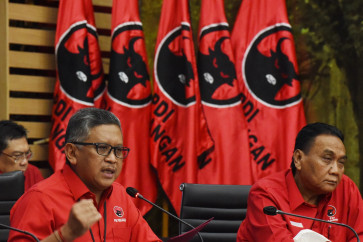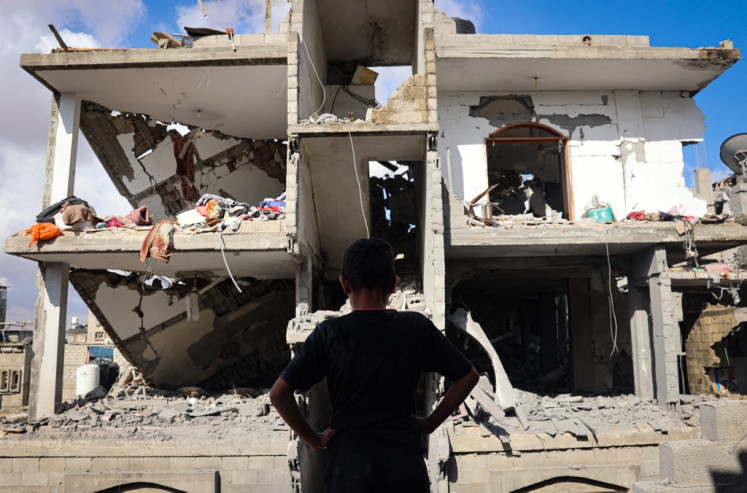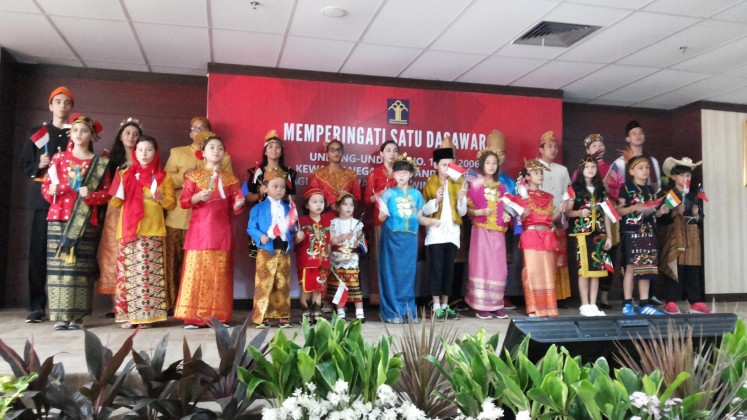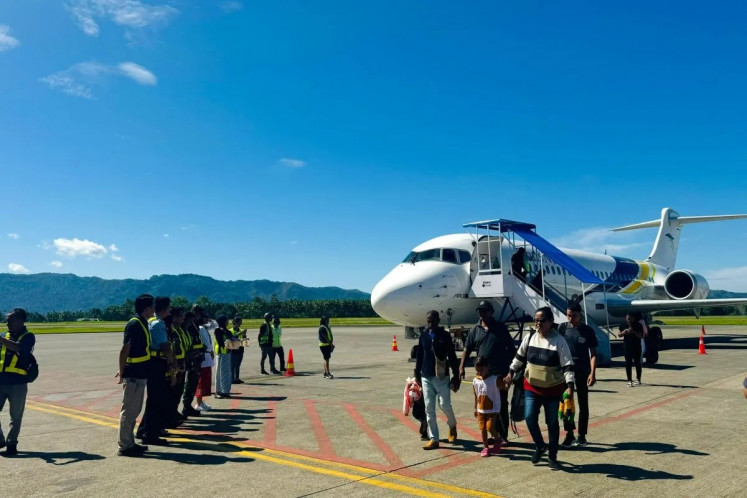E. Nusa Tenggara villages suffering harvest failure, food shortages
Change Size
 Water crisis – Residents of Naileu village in Kie district, Timor Tengah Selatan regency, East Nusa Tenggara, queue up to get clean water.
(thejakartapost.com/Djemi Amnifu)
Water crisis – Residents of Naileu village in Kie district, Timor Tengah Selatan regency, East Nusa Tenggara, queue up to get clean water.
(thejakartapost.com/Djemi Amnifu)
T
wo regencies in East Nusa Tenggara, namely Nagekeo and Timor Tengah Selatan (TTS), are suffering from prolonged drought and food shortages. It is estimated some 39 villages in these regencies require humanitarian assistance and long-term aid.
Humanitarian organization Plan International Indonesia said recently that from the end of March, it had dispatched an emergency response team to the 39 villages.
“The emergency response team has distributed clean water in the Nagekeo and TTS regencies to reduce the impact of a long dry spell resulting from El Niño, which will affect East Nusa Tenggara until 2016,” the organization’s country director Myrna Remata Evora told journalists in Kupang, East Nusa Tenggara, on Saturday.
Myrna said the prolonged drought had reduced the quality of life in Nagekeo and TTS. Several villages in the two regencies are experiencing a clean water crisis alongside harvest failure and food scarcity. The dispatch of the emergency response team is aimed at reducing El Niño’s impact on the province, she said.
“The emergency response team will distribute clean water to villages in Nagekeo and TTS. Every village will get 5,000 liters of water every day for the next 30 days. This emergency work is supported by Start Fund, a multi-donor fund,” said Myrna.
Plan International Indonesia’s disaster mitigation program advisor Wahyu Kuncoro said that the amount of clean water available for people in the 39 villages was not enough. This is because the water distributed is usually prioritized as drinking water, and not allocated for domestic household needs, he added.
Wahyu further explained that as a humanitarian organization focused on fulfilling the rights of children, Plan International Indonesia wanted to ensure that children in the villages could easily obtain clean water.
“The health of children is our priority. We have coordinated with all village-level administrations and local volunteers to prioritize children in the water distribution scheme,” he said.
Wahyu said the water would be distributed using trucks deployed to the villages. Beforehand, every village would be equipped with two fiber-made water tanks with a capacity of 2,200 liters each.
In the next 30 days, the clean water will reach more than 26,000 people in Nagekeo and TTS, around 15,000 of whom are children, Wahyu said.
After monitoring the region, Yahya Ado, the organization’s program manager in Nagekeo, said two districts in Nagekeo, namely Aesesa and South Aesesa, had suffered the most from the long dry spell. Both districts have experienced severe harvest failure.
“Our results are supported by data from the Nagekeo Disaster Mitigation Agency [BPBD], which shows that three villages in Aesesa district have suffered 100 percent harvest failures. Meanwhile, damage to land in two villages in South Aesesa district has reached 50 percent,” said Yahya. (ebf)









